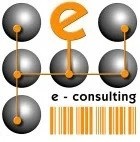How to Choose the Right IT Support Provider in the UK

How to Choose the Right IT Support Provider in the UK
Article:
How to Choose the Right IT Support Provider in the UK: A Complete Guide for Businesses
Selecting an IT support provider is a critical decision that shapes your business continuity, cybersecurity posture and growth trajectory. Recent industry data shows that 80 percent of UK businesses experience unplanned IT downtime each year, costing an average of £12,000 per incident.
IT Downtime Costs for UK Businesses
Unplanned IT downtime significantly impacts UK businesses, with 80% experiencing incidents annually. These incidents result in substantial financial losses, averaging £12,000 per occurrence, highlighting the critical need for reliable IT support to minimise disruptions and associated costs.
This research underscores the financial implications of IT failures, directly supporting the article’s emphasis on the importance of choosing a dependable IT support provider.
This guide will help you:
- Define and prioritise your IT support requirements
- Evaluate essential provider criteria such as certifications, SLAs and response times
- Understand the value of local expertise in Birmingham and the West Midlands
- Prepare focused questions to uncover hidden costs and contract pitfalls
- Explore the benefits of proactive managed services, cloud migration and disaster recovery
- Benchmark pricing models and calculate your return on investment
- Follow final steps and recommendations to onboard the ideal partner
By following these step-by-step insights, you’ll minimise downtime, secure sensitive data and unlock scalable IT support aligned to your growth plans.
What Are Your Business IT Support Needs?
Identifying your business’s IT support needs lays the foundation for choosing a provider that accelerates efficiency and minimises risk. A clear understanding of current infrastructure, pressing challenges and service models ensures your provider aligns with both present demands and future ambitions.
How to Assess Your Current IT Infrastructure and Future Goals
Assessing your IT infrastructure involves cataloguing hardware, software, network topology and user workflows. This evaluation reveals performance bottlenecks, security gaps and scalability limits. By mapping these findings against your strategic goals—such as digital transformation or remote workforce expansion—you create a roadmap for targeted support. For example, upgrading legacy servers may be essential before implementing advanced cybersecurity tools.
This assessment naturally leads to pinpointing the most critical areas for improvement under a managed support agreement.
What Specific IT Challenges Do UK Businesses Face?
UK businesses commonly encounter:
- Legacy system vulnerabilities that delay patch management
- Limited bandwidth in regional offices affecting remote collaboration
- Rising phishing and ransomware threats
- Compliance demands under GDPR and industry regulations
Each challenge amplifies the need for a support partner skilled in network optimisation, secure remote access and regulatory compliance. Addressing these issues early paves the way for proactive risk mitigation.
What Are the Differences Between Managed and Reactive IT Support?

Managed IT support delivers ongoing monitoring, maintenance and strategic planning to prevent issues before they occur, while reactive (break-fix) support responds only after a problem arises. The table below summarises key distinctions:
Preventive maintenance through a managed model sustains uptime and aligns IT operations with business growth.
What Key Criteria Should You Use to Evaluate IT Support Providers?
Choosing the right provider hinges on measuring expertise, contractual clarity, responsiveness, security posture, scalability and transparent pricing. Each criterion ensures you partner with a team that delivers reliable, future-proof services.
How Important Are Expertise and Industry Certifications?
Expertise backed by recognised certifications—such as Microsoft Gold Partner, Cisco Certified Network Professional (CCNP) or ISO 27001—demonstrates a provider’s ability to deploy and manage complex environments. Certified engineers follow best practices, reducing configuration errors and security misconfigurations. Verifying specialisms relevant to your sector (e.g., NHS data handling or financial services compliance) further assures domain-specific proficiency.
This focus on proven skills directly supports robust service delivery under evolving technical demands.
What Should You Look for in Service Level Agreements (SLAs)?
A clear SLA defines:
- Response times for critical, high, medium and low-priority incidents
- Resolution time targets for each severity level
- Uptime commitments (e.g., 99.9 percent availability)
- Reporting cadence and escalation procedures
By comparing SLA clauses side-by-side, you guarantee predictable support metrics and accountability if service levels slip.
How Do Response Times and Availability Affect Your Business?
Rapid response and 24/7 availability ensure that outages are addressed before they cascade into revenue-impacting events. A provider with local engineers in Birmingham and the West Midlands can offer on-site support within hours, reducing downtime and restoring productivity faster than remote-only models.
Faster intervention translates into fewer lost sales and less operational disruption.
What Cybersecurity Measures and Compliance Are Essential?
A robust support partner implements multi-layered controls—firewalls, endpoint detection, secure configuration baselines and regular vulnerability scans. They maintain GDPR-compliant data handling and can guide you through Cyber Essentials or ISO 27001 accreditation. Demonstrable incident response plans and penetration testing services confirm their commitment to protecting business data.
These security measures underpin resilience against evolving cyberthreats.
How Do Scalability and Flexibility Support Business Growth?
Your IT support provider should scale resources and adjust service scope as your organisation expands. Flexible contracts allow you to add new sites, users or services without lengthy renegotiations. Providers leveraging cloud platforms can rapidly provision infrastructure, supporting seasonal demand spikes or new project rollouts.
Scalable support keeps pace with changing business needs while avoiding over-commitment.
What Are Transparent Pricing Models and Cost-Effectiveness?
Comparing pricing structures helps align support costs to your budget and risk appetite. Common models include:
Why Is Local IT Support Crucial for Birmingham and West Midlands Businesses?

Local expertise in Birmingham and the West Midlands offers faster on-site response, deeper market understanding and stronger community ties. Proximity to your operations fosters close collaboration and tailored service.
What Are the Benefits of Choosing a Local IT Support Partner?
Partnering with a provider based in your region delivers:
- Rapid on-site interventions when remote fixes fall short
- Insight into local infrastructure constraints and supplier networks
- Face-to-face planning workshops and quarterly business reviews
- Stronger alignment with community and regulatory bodies
Local presence elevates responsiveness and fosters a collaborative relationship that national chains often lack.
How Have Birmingham Businesses Thrived with Expert Local IT Support?
A manufacturing firm in Solihull reduced network downtime by 60 percent after switching to a regional managed services provider. Regular security audits and on-site training empowered staff to spot phishing attacks, cutting incident response times in half. This local partner’s understanding of Midlands supply chain dynamics enabled seamless roll-outs of IoT monitoring across factory floors.
These tangible outcomes illustrate how on-the-ground support drives operational resilience and growth.
What Questions Should You Ask Potential IT Support Providers?
Asking the right questions ensures you uncover service quality, hidden costs and long-term alignment before signing a contract.
Which Essential Questions Ensure Reliable and Proactive Support?
- What is your average response and resolution time for critical incidents?
- Can you share sample SLA reports and uptime dashboards?
- How do you conduct proactive monitoring and patch management?
How to Identify Hidden Costs and Contractual Pitfalls?
- Are there fees for after-hours or emergency visits?
- What charges apply to third-party software licences or hardware replacements?
- How do you handle out-of-scope requests and additional project work?
What Should You Know About Contract Renewal and Exit Strategies?
- What notice period is required for contract termination?
- Do you provide data export support and handover documentation?
- Are there penalties or fees for early termination?
How Can Managed IT Services Benefit Your UK Business?
Managed IT services deliver continuous support, strategic guidance and rapid issue resolution, driving efficiency and enabling innovation.
What Are the Advantages of Proactive IT Monitoring?
Proactive monitoring identifies anomalies—such as storage spikes, unauthorised access attempts or patch failures—before they escalate into outages. Automated alerts and real-time dashboards mean technicians intervene at the first sign of risk, reducing unplanned downtime by up to 50 percent.
Benefits of Managed IT Services
Managed IT services offer proactive monitoring and maintenance, which can reduce unplanned downtime by up to 50%. This proactive approach helps businesses avoid costly disruptions and maintain operational efficiency, aligning IT operations with business growth objectives.
This study validates the advantages of managed IT services, reinforcing the article’s promotion of proactive IT support as a means to improve business continuity and reduce downtime.
Such vigilance lays the groundwork for agile responses to emerging operational demands.
How Do Cloud Migration and Management Services Support Growth?
Migrating workloads to cloud platforms like Microsoft Azure or AWS enables seamless resource scaling, enhanced disaster recovery and improved collaboration. Managed services handle architecture design, data migration and ongoing optimisation. As your compute and storage needs evolve, the provider adjusts capacity instantly, ensuring cost-effective performance.
A well-executed migration under expert guidance unlocks agility for new initiatives.
Why Is Disaster Recovery Planning Vital for Business Continuity?
Disaster recovery (DR) planning safeguards your operations against data loss and system failures. A robust DR plan includes:
- Regular backups to off-site or cloud locations
- Defined recovery time objectives (RTO) and recovery point objectives (RPO)
- Periodic DR drills and restoration tests
This preparation minimises the financial and reputational impact of incidents, preserving client trust and regulatory compliance.
How Much Does IT Support Cost for Small and Medium UK Businesses?
IT support costs vary based on service scope, SLA levels, user count and infrastructure complexity. Understanding these factors helps you budget effectively and evaluate value.
What Factors Influence IT Support Pricing Models?
Key influencers include:
- Number of endpoints and servers under management
- Response time and availability requirements
- Scope of cybersecurity and compliance services
- Complexity of network and cloud environments
Outlining these determinants clarifies how different providers arrive at their monthly or per-incident fees.
How to Calculate ROI for Managed IT Services?
Calculating ROI involves comparing support costs to savings in downtime, staff hours and unplanned repairs. For instance, if managed services reduce downtime by 30 hours annually at £200 per hour, you save £6,000—offsetting a typical managed retainer of £5,000 per year with additional productivity gains.
Quantifying these metrics demonstrates the business case for proactive support.
What Are Cost-Benefit Considerations for Outsourced IT Support?
When outsourcing, weigh:
- In-house team costs: salaries, training, benefits and turnover risks
- Managed services retainer: predictable monthly expenses and pooled expertise
- Scalability savings: avoiding large capital expenditures on hardware and licences
A comprehensive comparison often reveals that outsourced managed services deliver enterprise-grade IT at a fraction of in-house overheads.
How to Choose the Best IT Support Provider in the UK: Final Steps and Recommendations
After evaluating needs, criteria and costs, focus on reputation, partnerships and onboarding to finalise your decision.
How to Evaluate Provider Reputation and Customer Reviews?
Look for:
- Testimonials from UK SMEs in similar industries
- Case studies detailing problem resolution and ROI
- Verified ratings on trusted business platforms
Positive social proof and quantifiable success stories confirm a provider’s track record.
What Certifications and Partnerships Indicate Quality?
Quality markers include:
- Cyber Essentials, ISO 27001 or NIST compliance
- Microsoft Gold Partner or AWS Premier Consulting Partner status
- Industry-specific accreditations (e.g., ISO 9001 for manufacturing)
These credentials demonstrate commitment to standards and ongoing technical excellence.
How to Get Started with Your Chosen IT Support Provider?
- Schedule a discovery workshop to align on objectives and timelines.
- Agree a detailed statement of work covering tasks, milestones and SLAs.
- Onboard through phased implementation, starting with critical systems.
Structured onboarding ensures seamless integration and rapid realisation of support benefits.
Informed choices around IT support minimise downtime, protect data and fuel business growth. By defining needs, applying rigorous evaluation criteria, leveraging local expertise in Birmingham and the West Midlands, and embracing proactive managed services, you position your organisation for reliable performance and competitive advantage. Contact e-consulting.uk.com today to explore a tailored IT support plan and secure your digital future.


